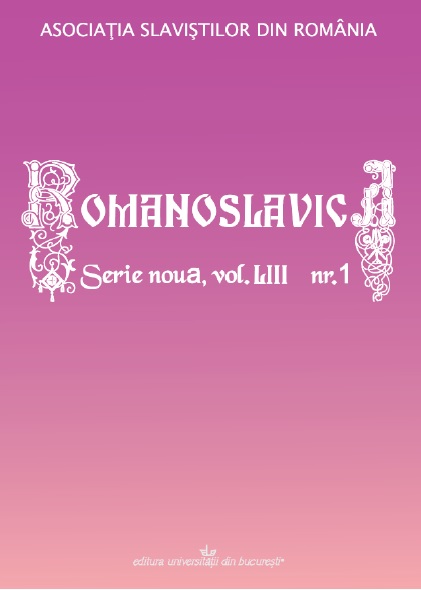DID THE 1993 ORTHOGRAPHICAL CHANGE EFFECT THE PRONUNCIATION OF THE CLOSE CENTRAL VOWEL IN ROMANIAN?
THE PHONOLOGICAL PERSPECTIVE
DID THE 1993 ORTHOGRAPHICAL CHANGE EFFECT THE PRONUNCIATION OF THE CLOSE CENTRAL VOWEL IN ROMANIAN?
THE PHONOLOGICAL PERSPECTIVE
Author(s): Dennis EstillSubject(s): Language and Literature Studies
Published by: Editura Universităţii din Bucureşti
Keywords: Close central vowel; mid-central vowel; formants; word-initial position; overlap; vowel length; word-stress
Summary/Abstract: The Romanian orthography was changed in 1993. Arguments for and against this change have been debated at length, and are well known. However, to my knowledge no serious studies have been made taking into close consideration the phonetic point of view, which would seem to be the most relevant, because speech is primary and bears on language learning and correct pronunciation as a whole, and that includes the media. The object of the study described in this paper is to determine whether there are still questions concerning the orthography that require further examination and correction especially from the point of view of phonetics.The study was based on an analysis of the speech of Romanian speaker-informants from various parts of the country (including one from Moldova) and the media, male and female. For comparison purposes in the case of five informants the recorded material was the same for all, the reading of Æsop's fable The North Wind and the Sun, while the rest was chosen at random. Other informants were extracted from the media and elsewhere. All speakers were carefully selected taking into consideration their date of birth and exposure to a particular orthography.The results suggest that regardless of the social situation of the speaker or other factors, while some Romanians pronounce the graphemes /â/ and /î/ in precisely the same way, that is, as one sound, others seem to use two different allophones, one for /â/ and one for /î/, with the latter much closer, as the orthographic symbol would imply. Therefore, the question which needs to be decided is whether orthographic changes should be made, and if so, on the basis of what historic, political or phonetic/phonological considerations, bearing in mind that attention should concentrate on the spoken language, and the assurance of its heritage, rather than on the secondary written one.
Journal: Romanoslavica
- Issue Year: LIII/2017
- Issue No: 1
- Page Range: 31-41
- Page Count: 11
- Language: English

